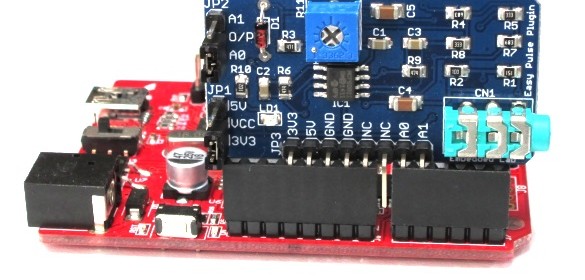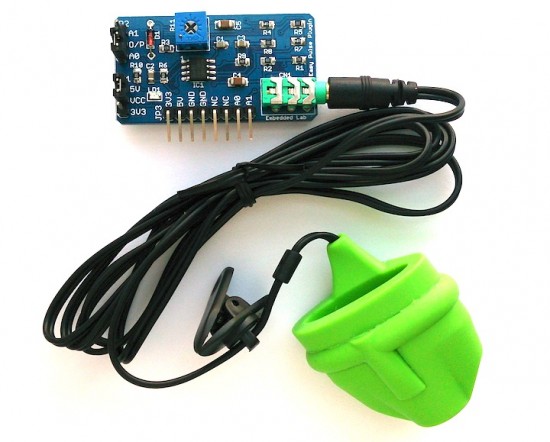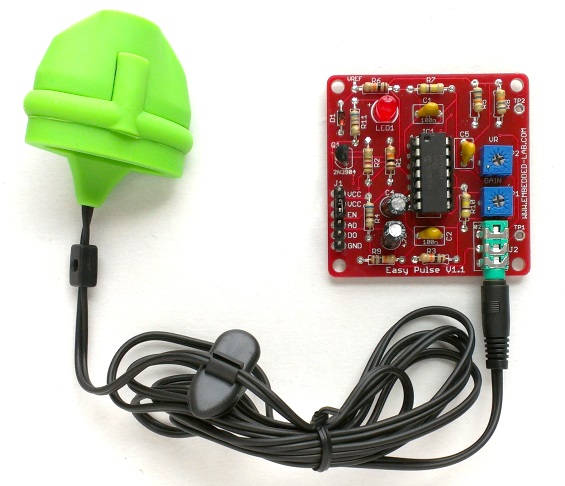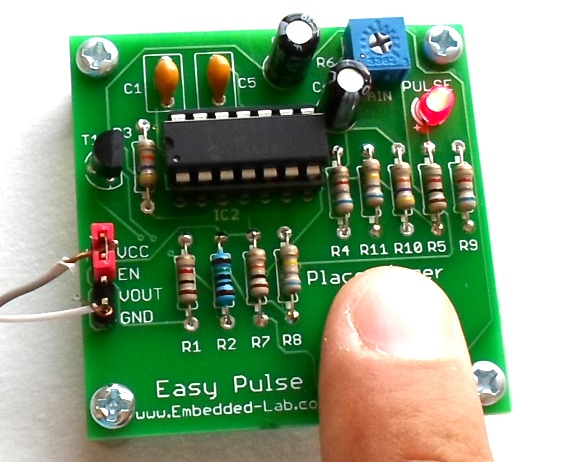Introducing Easy Pulse Plugin: A breadboard friendly and Arduino/chipKIT compatible pulse sensor

Today we are happy to announce the release of a new addition to our Easy Pulse Sensor series named Easy Pulse Plugin. Like its predecessors, the original Easy Pulse and Easy Pulse V1.1, Easy Pulse Plugin also operates on the principle of Photoplethysmography, which is an optical technique of sensing blood volume changes in tissues by illuminating the skin surface with a light source and measuring the reflected or transmitted light using a photodetector. The photodetector output contains the cardiovascular pulse wave, which is synchronized with the beating of the heart. Easy Pulse Plugin provides all necessary instrumentation and amplification on board to detect the cardiovascular pulse signal from the fingertip. The most important characteristics of Easy Pulse Plugin is that it can be easily plugged into the left headers of Arduino Uno (or its compatible clone) board for easy interfacing, and the analog pulse signal can be fed to either A0 or A1 analog input through a 2-pin jumper selection. You can buy this sensor at our Tindie Store as well as from Elecrow with worldwide shipping.





